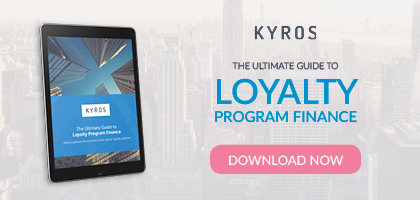In my previous articles, we talked about the challenges faced by both loyalty program finance professionals and loyalty program marketers as they seek to create revenue-driving loyalty programs.
Now, we turn our attention to accountants, who face significant obstacles towards accurately accounting for loyalty program liability.
In this article, we’ll examine the role of accounting for loyalty programs, the frequent challenges encountered by accounting professionals, and the opportunity available to ensure a smoother close process.
The loyalty program accountant
Quarter end is often a stressful and hectic time for any accountant. They’re racing to close the books under tight deadlines, and auditors and senior leaders are asking tough questions about the company’s financial performance.
It shouldn’t come as a surprise that accountants strive for a smooth and efficient closing process; no surprises along the way, no excessive reporting.
When it comes to loyalty programs, accountants are responsible for booking an accurate liability or deferred revenue estimate on the balance sheet, while ensuring that the organization is following the latest accounting standards and that auditors will sign off.
This means that not only do they face those tough questions from auditors and senior management, but they must also deal with managing unexpected changes in the company’s loyalty program liability.
Let’s take a closer look.
Asking tough questions — and expecting the right answers
The size of the loyalty program’s liability is an important consideration for accountants. In fact, it’s common for the program’s liability to be one of the largest on the company’s balance sheet. Consequently, loyalty program liability will draw scrutiny from auditors and senior leaders. Often, this leads to tough questions that many accountants struggle to answer, such as:
- Why is the liability changing?
- How confident are you that the estimate is correct?
- How might we influence the liability to manage to our financial plan?
Unlike more tangible liabilities (e.g., accounts payable), these questions are complicated because loyalty program liability is an uncertain estimate. Answering questions about liability require the ability to predict redemption behavior over a long period of time, and convince stakeholders that your predictions are indeed accurate.
Managing unexpected changes in loyalty program liability
Unfortunately, these questions can get even more complex when there are unexpected changes to program liability.
Loyalty program liabilities are frequently in the hundreds of millions to several billion dollars. At this scale, even a small change in liability will end up having significant financial impact.
Seeing a quarter’s profits wiped out because of an unexpected increase in liability is not something anyone would want to deal with.
The challenge for accounting is having an accurate and reliable liability estimate. The estimate should be on par with the expectation, without any surprises. It should come complete with all the backup support and data necessary to satisfy auditors and any other stakeholders with questions. And, it should come quickly after quarter’s end to ensure more time for analysis.
The opportunity
Everything that an accountant booking loyalty program liability needs hinges on one core capability: the ability to predict redemption behavior over time, while convincing stakeholders that the estimate model is reasonable. While predicting the future is never easy, there are tools in place to help you.
Sophisticated analytics, for example, helps you accurately predict redemption behavior. Imagine being able to point to actuarial backup that tracks the assumptions behind the liability estimate to prove that the data is emerging as expected.
You could confidently present your liability estimates to senior leaders and auditors, knowing that you have the right data to answer their probing questions. A sophisticated analytical model not only predicts today’s liability, it looks into the future to give you accurate estimates for what you’ll see at the close of the quarter.
What’s more, these analytic models can be continually refreshed, giving you updated liability estimates within days, and allowing you plenty of time to run the books and analyze the impact.
Suddenly, accounting for loyalty programs doesn’t seem quite as difficult, and quarter close becomes a little less stressful for everyone involved.





